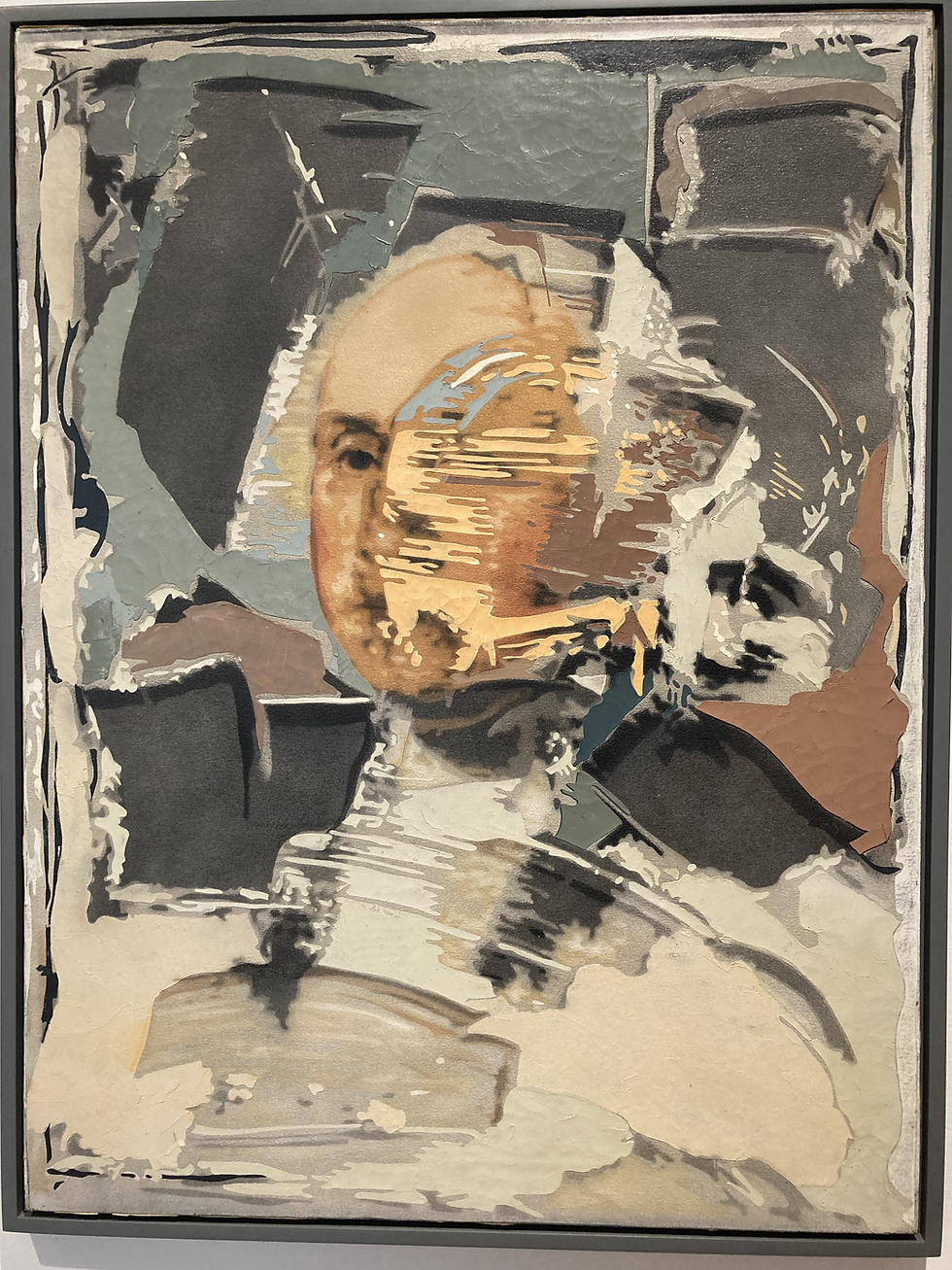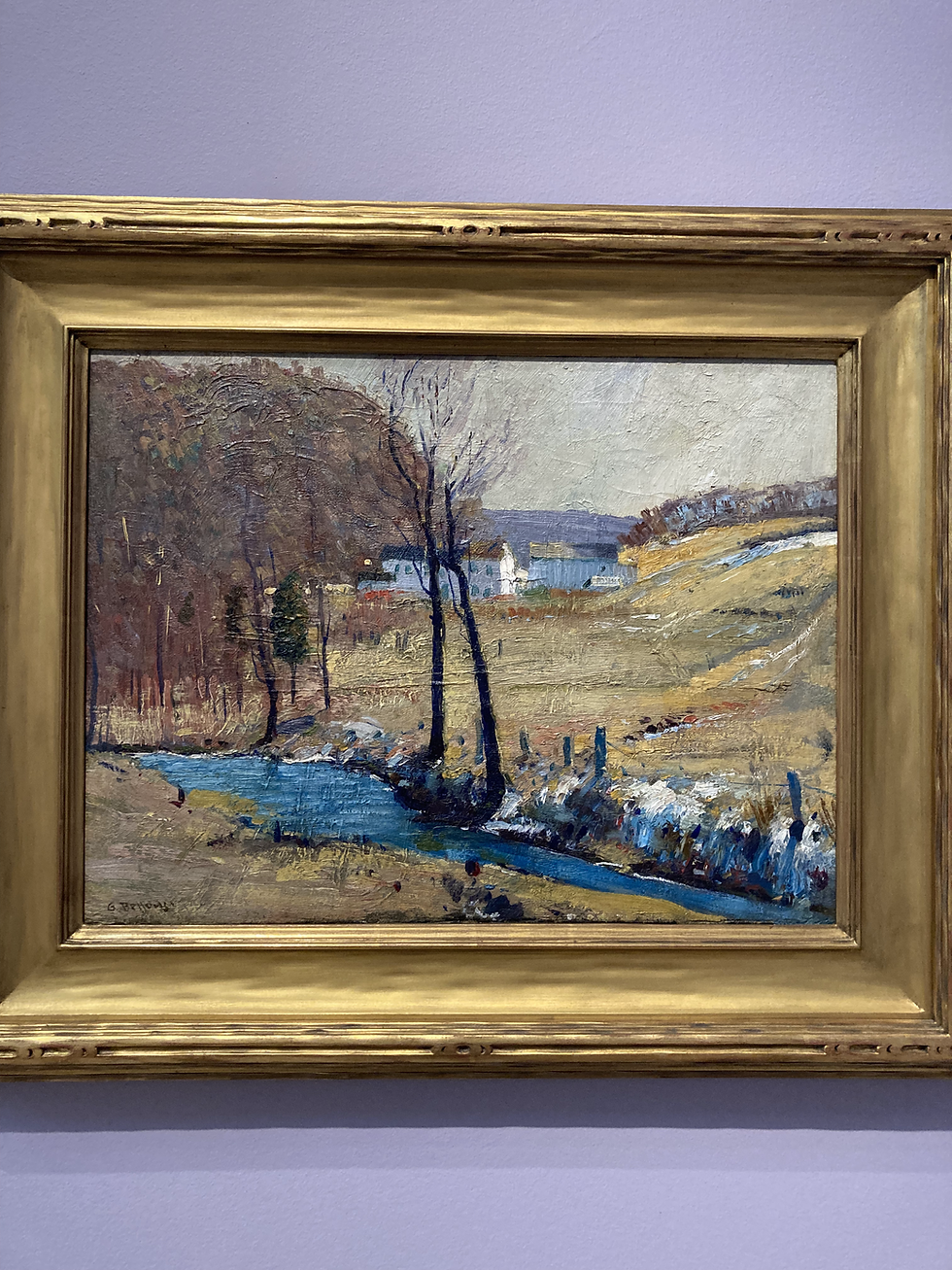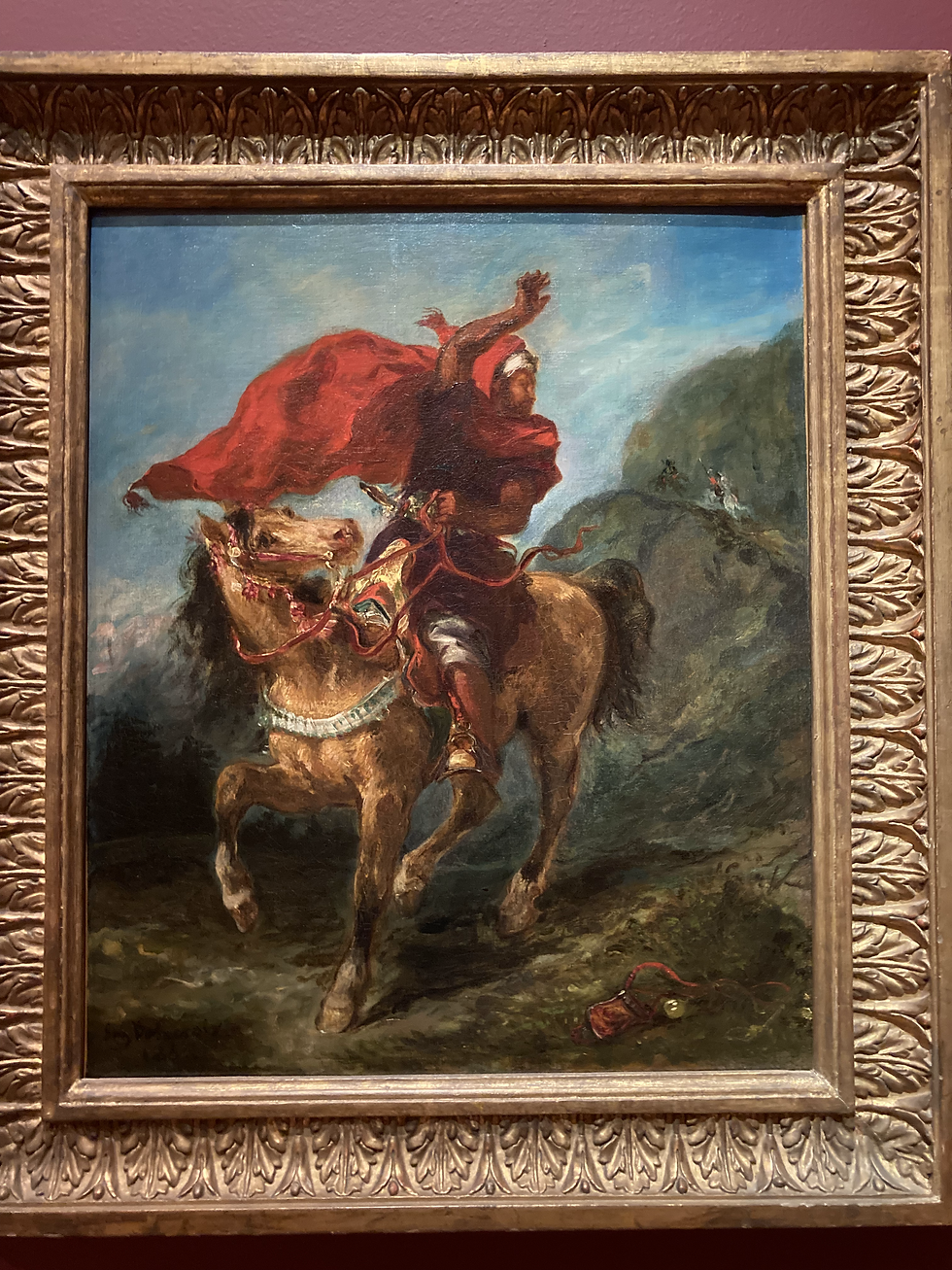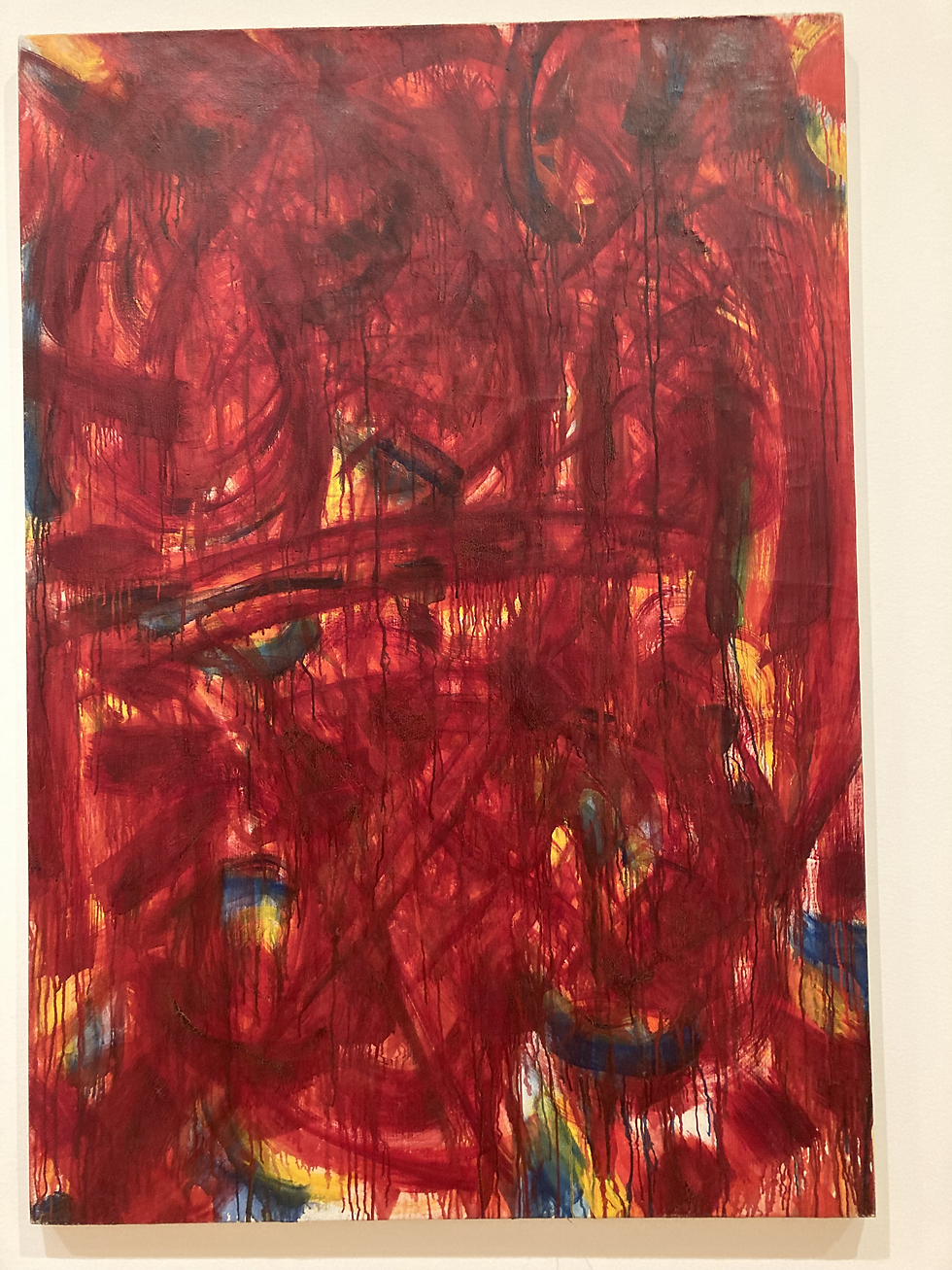"Artful practices for Well-Being"
- Scott M Williamson

- Jun 10, 2021
- 7 min read
Updated: Jun 15, 2021
My title refers to a MoMA COVID-era "playlist" in a recent Artforum feature on a new book about the surrealist feminist artist: The Tarot of Leonora Carrington.
Well-spent, powerful few days home earlier this week in "the Bridges" corner of Hampton Roads, where Chesapeake, Portsmouth and Suffolk meet. Mrs Patricia Price was being celebrated after a 5-year battle with cancer starting at age 80. She was our beloved WBHS pianist (and sometime assistant director of the choirs, lol), and organist at Churchland Baptist where she also served for several decades with Dr Price.
Dr and Mrs. Price were the first important music teachers, choir directors and mentors many of us had. The assembled choir (the first ensemble most of us had sung in for 18 months) featured a number of music educators and professional performing musicians, several generations of alumni and was a special reunion to honor a remarkable woman we knew and admired, learned from and loved.
And the weekend of memorial turned to the joy of discovery and the refreshing newness of young talent giving new readings of old classics. as RPM Studios did with the Jr edition of West Side Story.
While I am the subject's uncle, I can fully disclose my unbiased account of her performance. Sam Williamson was an impressive "Anybodys," commanding the scene with her well-timed acting and energized dancing whenever she was on stage. A fine demonstrations of the saying, "there are no such thing as small parts" [only small actors]. Go Sam!

John Clem Clarke (b . 1937): G-Series: George Washington, 1978
John Clem Clarke's 1978, "G-Series: George Washington" is now a classic example of what so-called "cancel" culture could look like. A reactive, orthodox response reads such alteration as the disrespectful "defacing" a "sacred" image. But this George isn't "canceled," he's redrawn. In poetry, "erasure" is a powerful formal tool for excising words and using the remaining fragments...
A close reading, an academic or interpretive examinations sees GW interrogated, neither erased completely nor wiped out, but irrevocably altered, like the subjects in his wake. Like the artist making this bold, ambitions, potentially dangerous and definitely courageous new version of a classic trope. Truth is not afraid to be questioned, Honest George. And lies become defensive when probed...
One block of free time was well-spent at the Chrysler Museum of Art. It was back c. 2010 that the 16th c. Heemskerck genre scene below, Apollo and the Muses inspired the first "Listening to Paintings." Thanks to Bill Hennessy and Jeff Harrison for their awesome leadership and vision!
Who knew that particular Virginia Chorale trio at the museum would lead to my decades-long (mostly) solo act and other projects at the Taubman Museum. Lucky me. I am so grateful art plays a central role in my professional and creative life these days.

I've been lucky to pair music and art ever since, and every return visit to the Chrysler feeds my imagination, fuels my inspiration and helps refill any empty tanks. This week's message was "take your time," pay attention and practice "slow-looking" at your favorites. (5'-10' in front of one picture).
Listen to what they have to say.
I stood in front of Blakelock's Grotto for nearly a quarter of an emotionally raw hour. He's one of my favorite American painters. He suffered from mental illness which affected his career and reputation, even as he was respected and beloved by colleagues. His works literally have a visionary sense of color and light. Simply looking at a painting long enough, or with the necessary attention (focus) can cause an emotional reaction, a release. Similar to what Mark Rothko describes in those who weep before his color-block canvases.
The moon in Blakelock's nocturnes... The rippling watery light of the iridescent greens always mesmerize me. The mysterious details, such as the fern-like leaves in the left background intrigue me. As do the small groups of visitors separated, if not compartmentalized across the scene.
The living, breathing, anthropomorphic quality to the landscape itself, visible in the foreground as an earthen face with people for pupils...

The CMA is an ideal museum to go and experience the span of painting in Art History in an abridged and impressively representative catalogue of everything from Illuminated medieval manuscripts to Renaissance classics and late Romantic landscapes like those above. What stories, scenarios, set-designs, screenplays or original content might you create from such prompts?
The average museum-goer spends something like less than 30 sec. in front of any one piece of art. Don't make this common mistake in the Chrysler's 200-level galleries. You could start with an "old classic" like Cole's "Angel to the Shepherds," whatever your tastes in subject, genre or period. The wall-sized spectacle is worthy of trumpets, drums and fanfare illuminating the occasion with brilliant musical orchestrations. Reproductions blur the additional 6 angels in the upper-left clouds, themselves a marvel of Cole's Constable-white palette meeting Turner's imagination. It is an awesome composition, a painting on the scale of Haydn's oratorio, Creation or Beethoven's mythic-heroic ballet, Prometheus...

Other landscapes provided opportunity to reflect on the affects of the seasons and the imagination, the weather and the temperaments. Reflecting back to the Renaissance again, and the "Anatomy of Melancholy" and the consistent use of landscape and the four seasons to express artistic temperament.
Or how artists of all ilks work through challenging processes, processing emotions, conflicts, differences and shifting winds to present new versions and engaging visions of familiar landscapes,
like Bellow's impressionist winter landscape with river, it's Constable-white snow foreshadowing Joan Eardley's Scottish snowscapes?

If you missed our Collective Euphonia presentation of Music, Art and Dance at the Taubman Museum in Roanoke for Mental Health Awareness, please check out our "Renewal and Healing" #L2P ("Listening to Paintings"). The 45' program, 30' convo and individual selections are all available on our YouTube page here.
Continuing our personally curated guided tour of the Chrysler, below are a few of my favorite things.
Ernest Lawson's (1873-1939) "Harlem River, Winter" (1910) an American "Neo-impressionist" landscape, striking for its textured layers and landscape details as for its stunning application of paint.
This is one of my favorite subjects of paintings or types of music to sit or stand with, and simply watch, look and listen... Art therapy by simply "showing up:" by being there for at least 90 seconds, and maybe even 10 min... What can you release? What will the wind carry away? What can you create in-between gusts

To complete your crash-course in Art history from Heemskerck and co. through the landscape and genre painters to Impressionism and early modernism (Picasso, Cézanne, Signac, Monet and co. are all there!) We can't leave of the class French romantics and pre-impressionists, Delacroix and Daubigny, respectively.

Besides a brilliant 19th century Romantic "action" painting by one of the "GOATS" of the genre, period and place, Delacroix's Arab horseman gives us a snapshot of race, class, culture and representation. And there's Daubigny's perfect sunset. Wow. I could never tire of looking at that.

Not dissimilar from a theme being pursued these season, Artemis/Diana, the Archer-goddess, sister of Apollo, Virgin defender of maidenhood. She not only punishes Actaeon for looking too long upon her forbidden sacred form, she turns him into her sacred animal, the stag, and sicks hounds upon him. Whether he is pursued and then killed (and eaten) by his own dogs or the goddesses' is not urgent. Another famous episode from this spring Goddess of renewal, the hunt and leader of the dance features the stern banishment of her nymph Callisto, who is impregnated and thus exiled for breaking the circle's vows.
Like Apollo, god of music and father of Orpheus, Artemis is aligned with music and leads the dance. She defends feminism and wronged women. Actaeon resembles Gyges and others who dare look upon that which is forbidden (or simply private).
Here is the Scottish artist David Wilkie's (1785-1841) Diana and Callisto (1803), the heightened expressive power of the dramatic gestures and neo-classic setting underscore the scene's melodramatic or operatic tones.
This kind of painting can draw you into its story and allow your own imagination to freely wander. Before you know it, after c. 90' seconds, you are in a new world co-created with your imagination in the moment, featuring the words you've read and the images you're seeing while listening to music which may be playing from this or that playlist, or if you're that rare synaesthete, maybe you're hearing original music while ALL of this is happening...

Art is a such a rich ground for all kind of therapeutic activities, from those including music to those described above to ones each reader or viewer creates for themselves. What do you need from the Hunter this month? What do you need to release right now? How can she and her attendants help you,
and how will you honor her before Spring ends? Where do you crave renewal? What newness do you need?
What ONE thing can you do to move towards a more positive/forward-thinking /creative/ impact making outcome...

Louise Fishman (b. 1939): Sven Jesper (2015)
This post began mentioning a special memorial. This seems a fitting way to end. A tribute to her late brother-in-law who died of complication of AIDS in 1989, aged 46. The US government's mis-handling of the AIDS crisis across the 1980's is a permanent bloodstain on our country's conscience. The progress we have since made is amazing. That many "cocktail therapy" patients who began successful therapies in the 1990's are living still, testament to that success does not change the failure of the 80's. We cannot "cancel" those individual lives nor the collective mistakes from the top down.
Lastly, Norman Bluhm's centennial is this year (1921-1999) this ab-ex action painting in the Chrysler's new flexible modern wing gorgeously balances the Rothko color blocks down the wall. And what an "ell" corner that procession makes in its current configuration, starting with Helen Frankenthaler's signature elusive abstraction (below)


Prompt(s):
What would happen if you let yourself draw, paint, compose, write, dance, sing
or otherwise freely create...
while engaged in another artistic activity like looking at art, watching dance, and/or listening to music. Not only great therapy, it can help unlock emotions and ideas.
It may help free up an old knot or loosen a hardened artery via the right creative stretch...
It may unlock creativity, ideation or other "stuck" places our psyche needs to unclog...





Comments